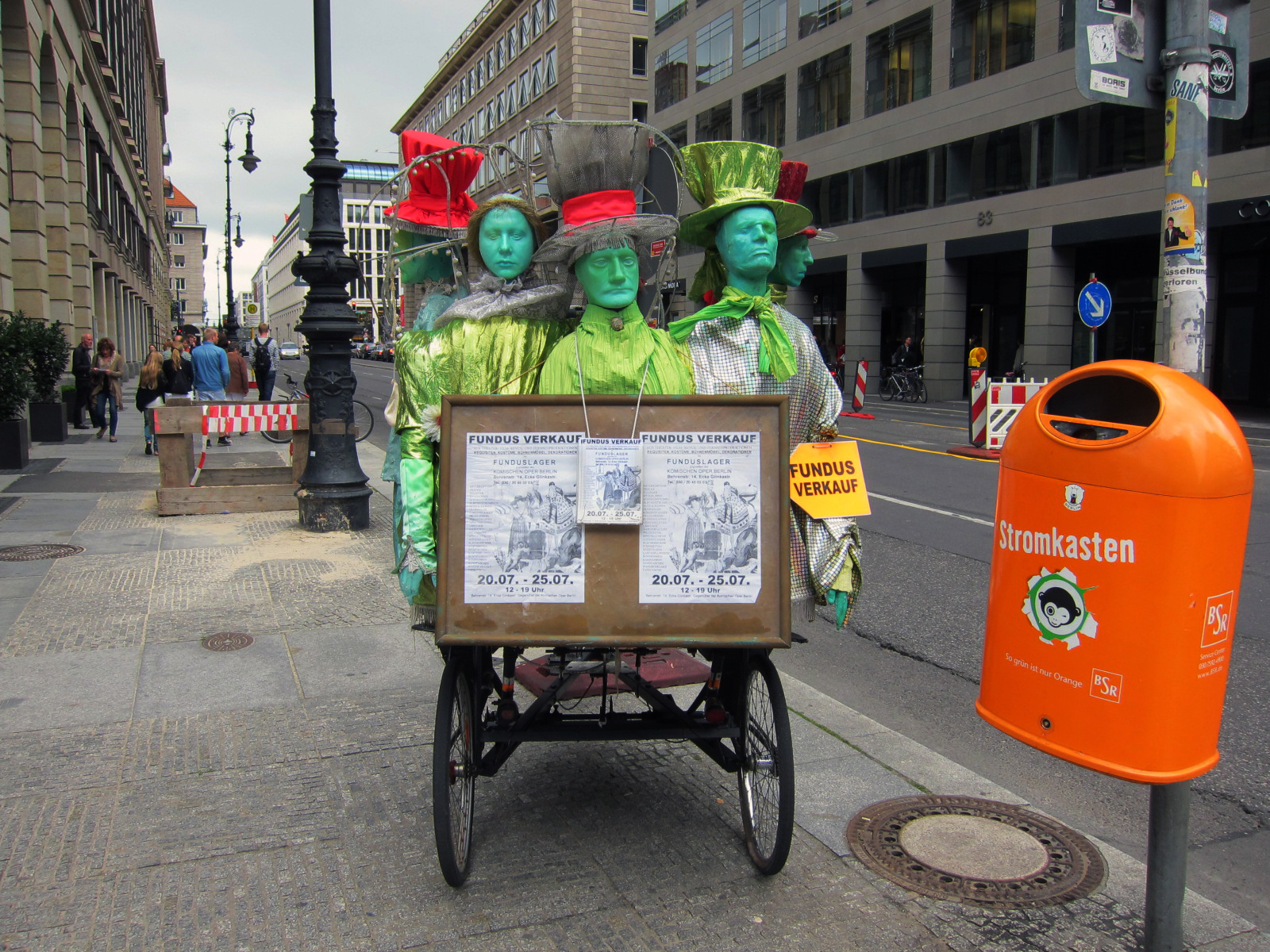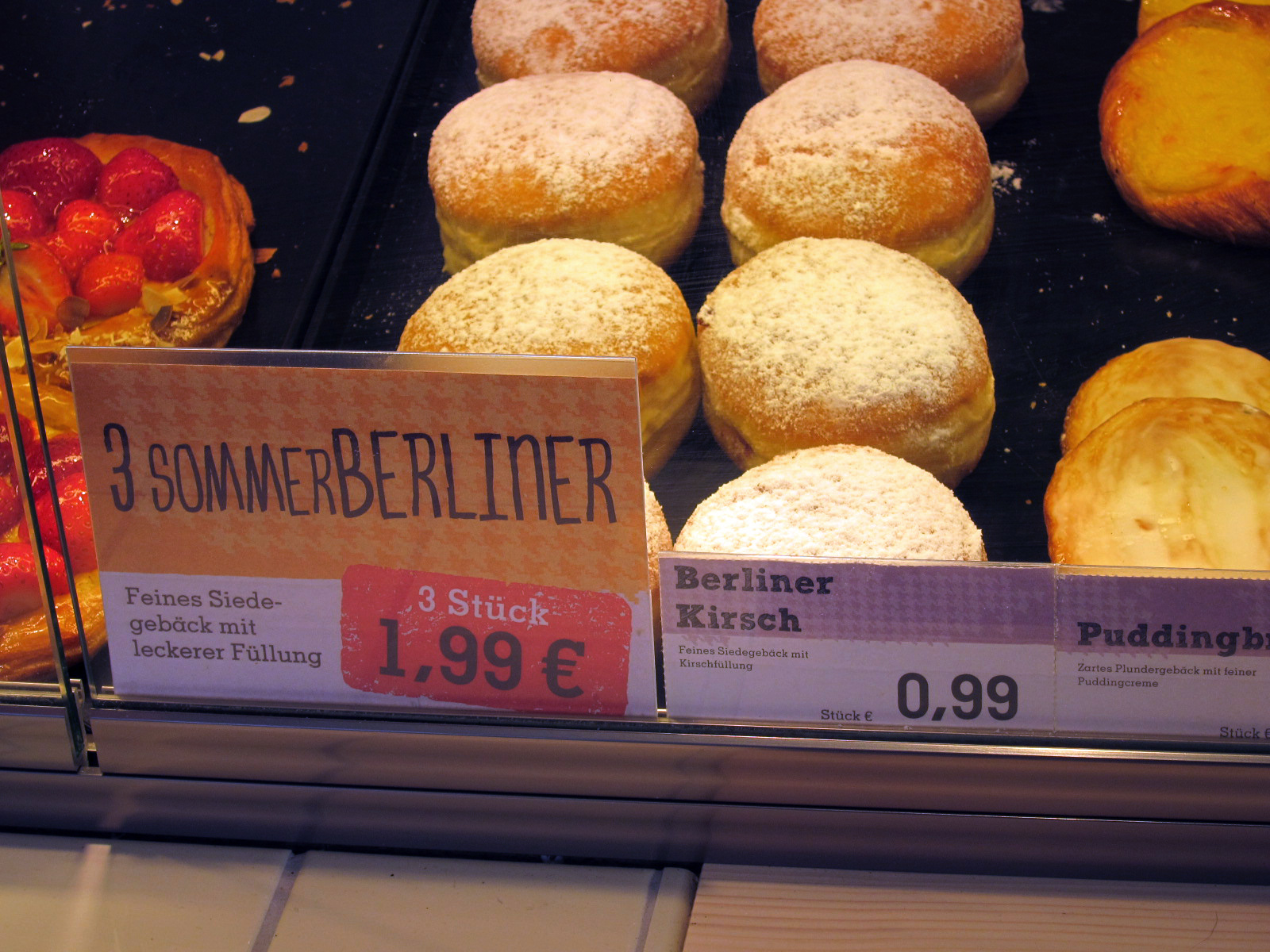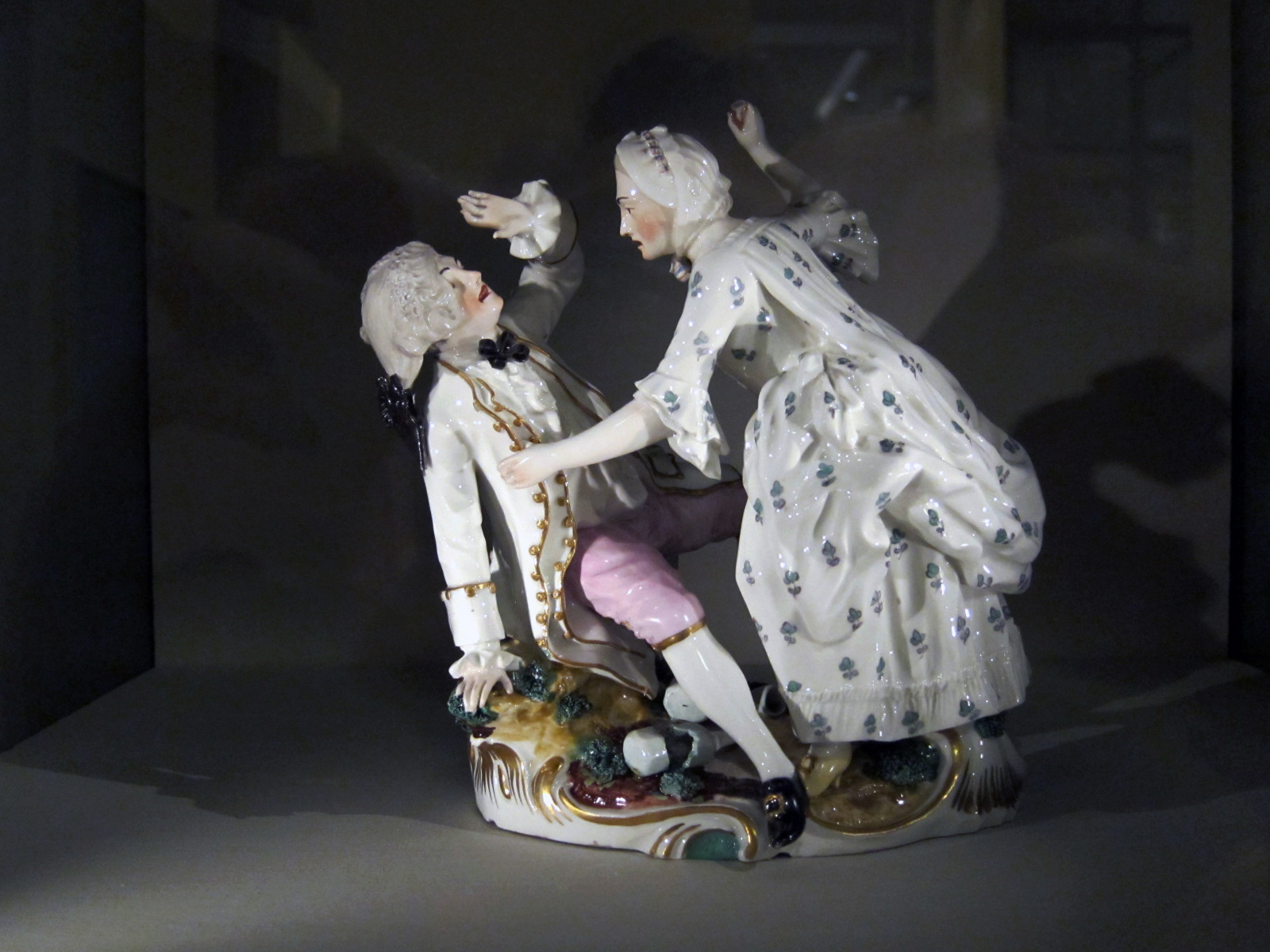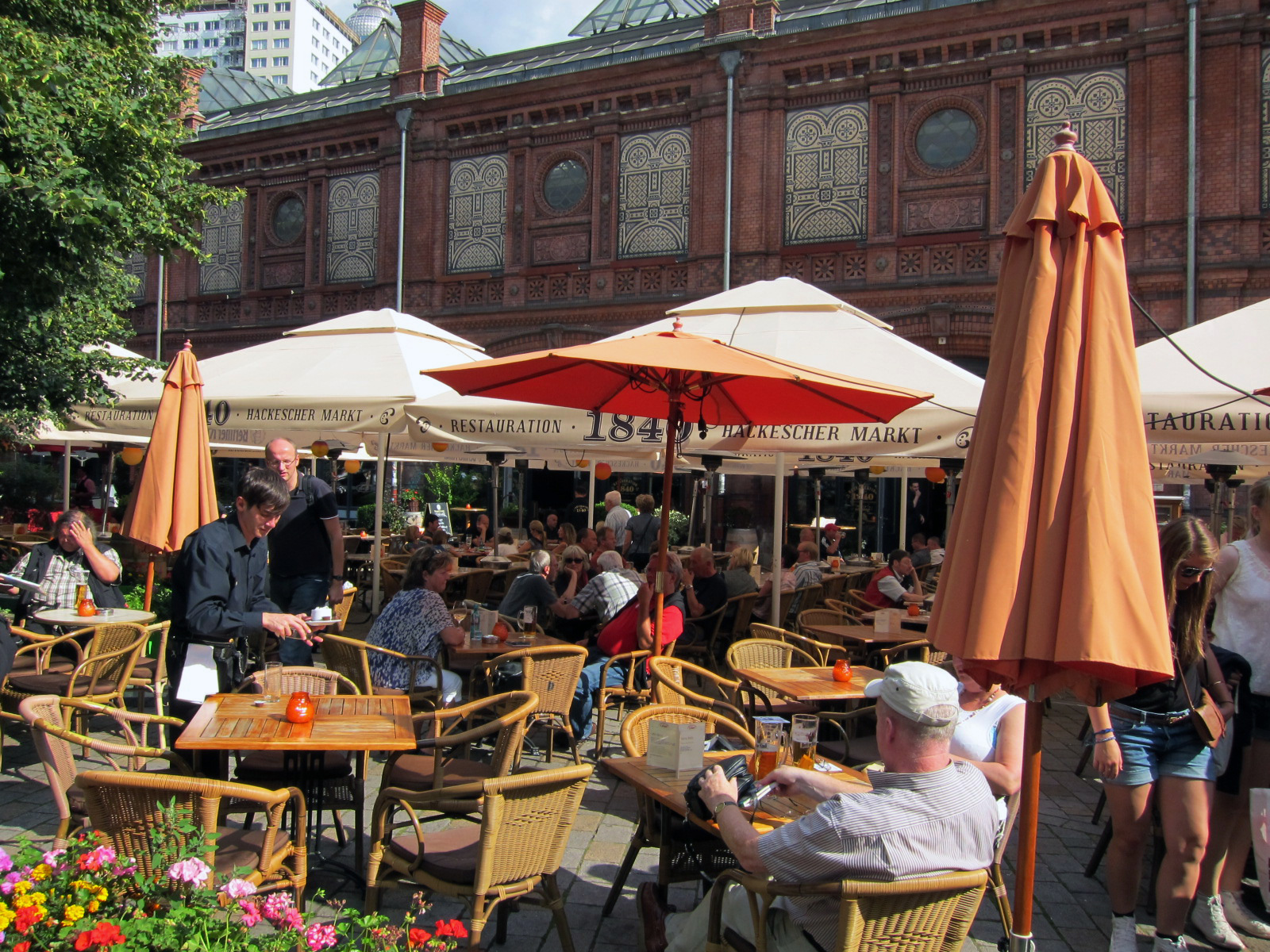 We like to use Berlin as our last stop before returning home. It’s an easy flight to Frankfurt and a direct flight to San Francisco. After a couple of month in the intense heat of the southern Mediterranean we can start to acclimate into the colder climates of northern Europe, although the last time we were here we got caught in a heat wave.
We like to use Berlin as our last stop before returning home. It’s an easy flight to Frankfurt and a direct flight to San Francisco. After a couple of month in the intense heat of the southern Mediterranean we can start to acclimate into the colder climates of northern Europe, although the last time we were here we got caught in a heat wave.
This time however, it’s a typical Berlin summer, cloudy, rainy and a bit chilly but that’s just fine. We’re acclimating to colder weather before going back to San Francisco, kind of like a decompression chamber.
Last year we rented an apartment in west Berlin, which used to be the more modern and contemporary part of the city. Not so much anymore. When East Berlin was rebuilt after the wall came down, everything got new and/or renovated. The east is definitely the place to be.
This year we’ve rented an apartment on the trendy Friedrichstrasse, one of the main shopping arteries of the new city. The Stadmitte U-bahn station is across the street from our front door. We’re 150 meters from Checkpoint Charlie, one of the main tourist attractions, a 15 minute walk to the ultra modern Potsdamer Platz, a 20 minute walk to the Museum Island off Unter den Linden, about a 30 minute walk to the Brandenburg Gate and less than 10 minutes away from the Gendarmenmarket, home of some beautiful Schinkel designed 19th century classicalbuildings, great cafes and good restaurants. The apartment is in the back of the building and its nice and quiet. The windows overlook the courtyard and the bicycles that we rode everywhere. Berlin is one of the best cities in the world for cycling. Finding a great apartment in any city is a guarantee for us that we’ll come back.
 And so we spent the next 3 days cycling through the city, eating lots of bratwurst , rostbratwurst, fresh pretzels and drinking lots of beer. It’s what you do when you’re in Berlin. This is a photo of the famous pastry known as the “Berliner”. It’s more or less a jelly donut. When John F. Kennedy came to Berlin in June 1963 in order to confirm American support for West Germany he said the now famous words “Ich bin ein Berliner”, thinking he was claiming solidarity. To many, however, he was actually saying “I am a donut”. Oh well, it could have been worse. He could have been in Frankfurt and said “ich bin ein Frankfurter.”
And so we spent the next 3 days cycling through the city, eating lots of bratwurst , rostbratwurst, fresh pretzels and drinking lots of beer. It’s what you do when you’re in Berlin. This is a photo of the famous pastry known as the “Berliner”. It’s more or less a jelly donut. When John F. Kennedy came to Berlin in June 1963 in order to confirm American support for West Germany he said the now famous words “Ich bin ein Berliner”, thinking he was claiming solidarity. To many, however, he was actually saying “I am a donut”. Oh well, it could have been worse. He could have been in Frankfurt and said “ich bin ein Frankfurter.”
Its easy to get around in Berlin. The train system is one of the best in Europe and its very affordable. The only thing that’s a bit difficult is figuring out how to buy a ticket through the ticket machines. In the train stations there are designated uniformed people from the Deutche bahn (national railroad) to assist you. In the underground U-bahn stations it’s a little harder but once you figure it out it’s no problem. A train ticket is good for around 2hrs once you validate it, the U-bahn ticket is a little less. You must validate the ticket in a small ticket stamping machine in order to use it. If a conductor checks your ticket and its not validated you’re off the train. If the ticket is expired or if you try to get on the train without a ticket there is a big fine. Beware of people trying to sell you tickets. This is a new Berlin scam. They try to sell to tourists tickets that have already been stamped and are no longer valid. Don’t buy them. Go to the machines.
 Berlin is a great meeting of old and new. The skyline includes 17th and 18th century domes, 19th century buildings, 20th century towers and 21st century architecture. Its all pretty amazing. There are museums and memorials everywhere. From around 1918 till 1990, this was a city with a sad history and yet they are making the best effort to move on and move forward. The city is very clean (hey, they’re Germans), the people are very friendly and everything is very affordable. It’s actually one of the most affordable cities in Europe.
Berlin is a great meeting of old and new. The skyline includes 17th and 18th century domes, 19th century buildings, 20th century towers and 21st century architecture. Its all pretty amazing. There are museums and memorials everywhere. From around 1918 till 1990, this was a city with a sad history and yet they are making the best effort to move on and move forward. The city is very clean (hey, they’re Germans), the people are very friendly and everything is very affordable. It’s actually one of the most affordable cities in Europe.
There are many pasts here and the city makes an attempt to live with all of them. The 17th century Prussian Charlottenburg Palace was the summer home to the Prussian Kings. The grand Karl Friedrich Schinkel designed buildings of the Museum Island were built during the 19th century reign of the Prussian Kaiser Friedrich Wilhelm IV. The 227 ft. tall Victory Column In the Tiergarden, along the June 17th Avenue commemorates the Prussian victories against Austria, Demark and France during the 1800’s. The cannon barrels that decorate the column were taken from the defeated armies (mostly the French). The Kaiser Wilhelm Memorial Church was built in the 1890s and totally bombed out by the Allied bombing raid in 1943. The bombed out church spire still remains as a memorial. The Soviet War memorial near the Brandenburg Gate was built from the marble of Hitler’s Chancellery. Checkpoint Charlie was the third Allied checkpoint between East and West Berlin (alpha, bravo, Charlie) and there are pieces of the Berlin Wall decorating many parts of the city.
Aside from the monuments to the glories and pomp of war, there are the countless memorials to the tragedy and stupidity of war, mostly during the Nazi and Soviet Occupations. Berlin has become a living city of past glory and apology. I wrote more about this in my 2010 post of our time in Berlin.
Three days is barely enough time to see a city like Berlin but since we know the city, and since we had use of the bicycles, we did a lot; shopping, museums, rides through the Tiergarden Park, a movie at the Sony Cinemas in Potsdamer Platz and visits to many cafes.
We were hoping to revisit the recently re-opened Neuss Museum on the Museum Island. We were here in 2010 but the museum definitely warranted a return visit. However, we got sidetracked at the German History Museum, a renovated collection of German history from the ancient Romans through the Soviet occupation and into reunification that just opened in 2003. It’s a very complete and extremely well done timeline of the history of Germany.
 There were lots of surprises. There was the plaster cast of Oliver Cromwell made from his death mask. We saw the sword, hat and spurs of Napoleon, left behind at the battle of Waterloo after he fled the scene. And, even though I’m not a big fan of Meissen porcelain statues, there were some very unusual pieces that made me smile. The is a photo of a husband/wife engaging in a good ol 17th century argument.
There were lots of surprises. There was the plaster cast of Oliver Cromwell made from his death mask. We saw the sword, hat and spurs of Napoleon, left behind at the battle of Waterloo after he fled the scene. And, even though I’m not a big fan of Meissen porcelain statues, there were some very unusual pieces that made me smile. The is a photo of a husband/wife engaging in a good ol 17th century argument.
The German History Museum is spread throughout two buildings. The renovated History Museum has most of the collection. The newer, I.M. Pei extension is mostly used for temporary exhibits.
 After a half day of German History all we could do was ride our bike over to the Hackescher Market and have a beer and some wurst. Hackescher is another one of the great “meet and greet” locations in Berlin. The large square sits in front of a 19th century train station and although the trains do roll across the overhead tracks, you can’t really hear them in the square filled with cafes, people and music. We were told there is still a food market here on weekends but we just came for a beer and a wurst.
After a half day of German History all we could do was ride our bike over to the Hackescher Market and have a beer and some wurst. Hackescher is another one of the great “meet and greet” locations in Berlin. The large square sits in front of a 19th century train station and although the trains do roll across the overhead tracks, you can’t really hear them in the square filled with cafes, people and music. We were told there is still a food market here on weekends but we just came for a beer and a wurst.
You must be logged in to post a comment.